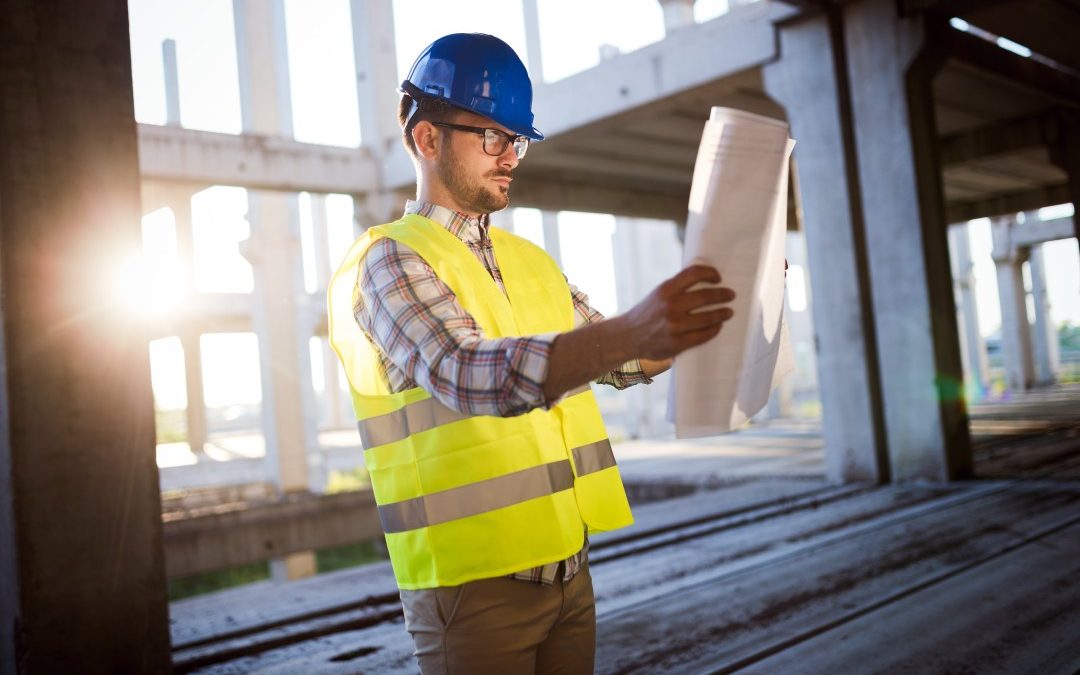All employers are required to provide a safe working environment for their staff, regardless of the size of your business or construction project. In the construction industry, people work in a dynamic environment. Hazards and risks change often on a site as construction work progresses and as workers move from project to project. A large majority of the industry’s workforce is employed by sub contractors who undertake work on many different sites managed by different contractors, and often within different sectors of the industry.
Every year many construction site workers are killed or injured as a result of their work; others suffer ill health. It is important to manage risks associated with the construction work.
The most common causes of serious injury or death on construction sites are:
• falls from heights
• contact with electricity
• being hit by falling objects
• moving plant.
Regular auditing of your construction sites can improve the level of awareness of safety amongst your staff as well as providing peace of mind that you are complying with all safety requirements.
Some key items to incorporate as part of your Construction Site Safety Audit are:
- Preparing for emergencies – Are there emergency procedures? Do staff know the procedures and where the nearest medical centre/hospital is located? Is there a stocked first aid kit? Is there someone who can administer first aid?
- General site management – Do your staff hold a Construction Induction training card? Are site inductions conducted? Do you have adequate site facilities? Do staff have the correct tools, equipment, plant and protective clothing to do the task safely?
- Subcontractor management – Do you collect and review their Safe Work Method Statements for High Risk Construction Work and discuss safety prior to commencing work? Do you check that their Workers Compensation is current and has a sufficient level of coverage? Do hold regular discussions about how the work is going?
- Consultation – Consultation gives your workers the opportunity to participate and share information about health and safety at work. Do you have established processes for consultation on site?
- Working at heights – Extreme care should be exercised for any work on roofs, scaffolding and/or ladders.Have you ensured there is appropriate training and fit-for-purpose controls to prevent workers from falling from heights?
- Scaffold – Is the scaffold erected, altered and dismantled by competent/licensed scaffolders? Do you get a competent/licensed scaffolder to inspect the scaffold regularly (such as every 30 days and after alteration, damage or bad weather)? Has a hand-over certificate provided by the scaffolder?
- Stairways and voids – Are all voids protected by covers that are secured in place and clearly marked as voids?
- Ladders – Can you buy or hire some alternative equipment that would provide a safer means of access (such as mobile scaffold, elevated work platform or platform ladder)? Can users maintain three points of contact when using the ladder?
- Working on Roofs – Is there edge protection, such as scaffolding or roof safety rails, to stop people or materials falling?
- Electricity and essential services – Have you clearly identified, marked and/or isolated existing services present on site (above and below ground, such as electric cables, gas mains, water mains and phone lines)?
- Traffic, vehicles and mobile plant – Are vehicles and pedestrians physically separated by barriers, markings and/or signage?
- Site security and protecting the public – Have you provided adequate site fencing to prevent unauthorised access to your site? Have you provided site signage with the principal contractor’s name, 24 hr contact number and site office location?
- Walkways, access and egress – Can everyone get to their place of work safely and work there safely?
- Trenches and excavations – Are trenches/excavations secured to prevent unauthorised access, falls and falling objects? Is there a support system in place to prevent collapse such as shoring, benching or battering?
- Loading and unloading materials – Have you planned your method of loading/unloading materials?
- Hazardous manual tasks – Where possible, can you eliminate or reduce hazardous manual tasks?
- Tools and machinery – Are the right tools or machinery being used for the job and in accordance with manufacturers specifications? Are all operators trained and competent?
- Hazardous chemicals – Have you identified all harmful substances and materials such as asbestos, lead, solvents, paints, cement and silica dust (such as from cutting concrete, bricks and rocks)? Is there a register that lists all the hazardous chemicals (except certain consumer products) used, stored and handled at your workplace?
- Noise – Have you identified and assessed workers’ exposure to noise level and duration? Is suitable hearing protection provided and worn in noisy areas?
- Personal Protective Equipment (PPE) – Is suitable personal protective equipment (PPE) provided to protect the worker for the tasks they are performing? This may include hard hats, safety shoes, hand, eye and ear protection.
Compliance Lab is able to conduct Construction Site Safety Audits for you if you do not have the resources. We are dedicated to providing specialist and practical advice to the building and construction industry.
Please contact Compliance Lab on either info@compliancelab.com.au or 1300 108 487.

